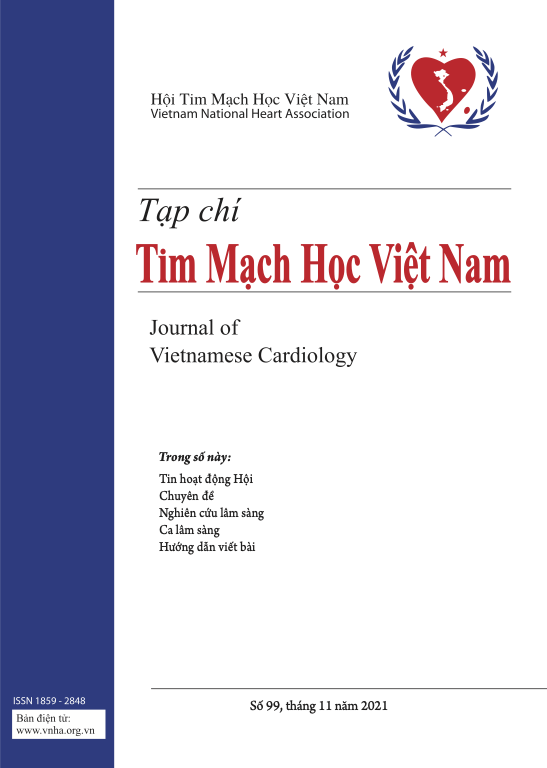Một số tiến bộ mới nhất của thiết bị tạo nhịp tim
Tóm tắt
Ngày nay, các chương trình máy tính hiện đại cho phép mô phỏng rối loạn dẫn truyền trong thất trái và rối loạn co bóp ở bệnh nhân suy tim. Từ đó, các chương trình này cho phép hiểu rõ mối quan hệ điện – cơ và có thể giúp dự đoán bệnh nhân sẽ có đáp ứng hay không đáp ứng với CRT. Các mô hình máy tính này còn hoàn toàn có thể mô phỏng cả các vùng sẹo nhồi máu cơ tim. Ngoài ra, các phương pháp chẩn đoán khác như cộng hưởng từ tim, siêu âm tim, chụp cắt lớp vi tính cũng giúp hoạch định chiến lược điều trị tối ưu và chuẩn bị trước thủ thuật cho bệnh nhân được cấy máy CRT (1). Trong một nghiên cứu, tác giả Ker-ckhoffs cho thấy ở bệnh nhân suy tim kèm blốc nhánh trái được cấy CRT, nếu bệnh nhân có sẹo hoại tử cơ tim càng lớn thì càng ít cải thiện chức năng thất trái (2).
Tài liệu tham khảo
1. Pluijmert M, Lumens J, Potse M et al (2015) Computer modelling for better diagnosis and therapy of patients by cardiac resynchronisation therapy. Arrhythm Electrophysiol Rev 4:62–67.
![]()
2. Kerckhoffs RC, McCulloch AD, Omens JH, Mulligan LJ (2009) Effects of biventricular pacing and scar size in a computational model of the failing heart with left bundle branch block. Med Image Anal 13:362–369.
![]()
3. Niederer SA, Shetty AK, Plank G et al (2012) Biophysical modeling to simulate the response to multisite left ventricular stimulation using a quadripolar pacing lead. Pacing Clin Electrophysiol 35:204–214.
![]()
4. Turakhia MP, Cao M, Fischer A et al (2016) Reduced mortality associated with quadripolar compared to bipolar left ventricular leads in cardiac resynchronization therapy. JACC Clin Electrophysiol 2:426–433.
![]()
5. Yang M, Li X, Liang J, Asirvatham SJ, Espinosa R, Li Y, Friedman PA, Cha YM (2018) Outcomes of cardiac resynchronization therapy using left ventricular quadripolar leads. Pacing Clin Electrophysiol. https://doi.org/10.1111/pace.13388 (Epub ahead of print).
https://doi.org/10.1111/pace.13388 (Epub ahead of print).">
![]()
6. Behar JM, Jackson T, Hyde E et al (2016) Optimized left ventricular endocardial stimulation is superior to optimized epicardial stimulation in ischemic patients with poor response to cardiac resynchronization therapy: a combined magnetic resonance imaging, electroanatomic contact mapping, and hemodynamic study to target endocardial lead placement. JACC Clin Electrophysiol 2:799–809.
![]()
7. Sieniewicz BJ, Behar JM, Gould J et al (2018) Guidance for optimal site selection of a leadless LV endocardial electrode improvesacute hemodynamic response and chronic remodeling. JACC Clin Electrophysiol (article in press).
![]()
8. Niazi I, Baker J II, Corbisiero R, Love C, Martin D, Sheppard R, Worley SJ, Varma N, Lee K, Tomassoni G (2017) MPP Investigators. Safety and efficacy of multipoint pacing in cardiac resynchronization therapy: the MultiPoint Pacing Trial. JACC Clin Electrophysiol 3:1510–1518.
![]()
9. Vijayaraman P, Naperkowski A, Ellenbogen KA et al (2015) Electrophysiologic insights into site of atrioventricular block: lessons from permanent His bundle pacing. JACC Clin Electrophysiol 1:571–581.
![]()
10. Parthiban N, Esterman A, Mahajan R et al (2015) Remote monitoring of implantable cardioverter- defibrillators: a systematic review and meta-analysis of clinical outcomes. J Am Coll Cardiol 65:2591–2600.
![]()
11. Hindricks G, Taborsky M, Glikson M et al (2014) Implant-based multiparameter telemonitoring of patients with heart failure (INTIME): a randomised controlled trial. Lancet 384:583–590.
![]()
12. Varma N, Piccini JP, Snell J et al (2015) The relationship between level of adherence to automatic wireless remote monitoring and survival in pacemaker and defibrillator patients. J Am Coll Cardiol 65:2601–2610.
![]()








